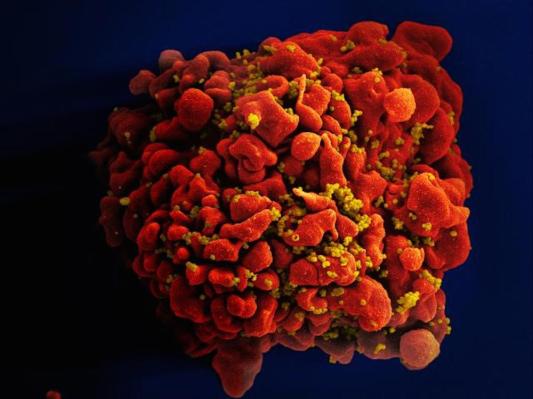A new HIV-blocking compound may be the answer to the now 30-year search for an AIDS vaccine.
Scientists, supported by the National Institute of Allergy and Infectious Diseases, say they have discovered a new compound that produces proteins within the cell that look like normal antibodies, but have Y-shaped heads that act as blockers to the virus that causes AIDS.
HIV is covered in spikes that try to attach to two receptors within the body of a cell. Antibodies can block one type of spike from HIV, but not the other. The new compound creates a protein known as eCD4-IG which blocks both binding spikes when the virus tries to attach itself to a cell within the body.
Historic methods of blocking the virus include myriad antibody cocktails that can block one or two strains of the virus. This approach has been shown to sometimes be ineffective.
This new experimental compound proved to be very effective when tested on monkeys, even on the most virulent strains of HIV. Four monkeys within the test were given the new compound and have so far been able to remain HIV free, despite repeated attempts to infect them throughout this last year. Scientists on the project believe this is a good indicator that they may have a a valid AIDS vaccine.
“Our compound is the broadest and most potent entry inhibitor described so far,” Dr. Michael Farzan, lead researcher on the project, said in a written statement.
Dr. Anthony S. Fauci, director of the National Institute of Allergy and Infectious Diseases, agreed with Farzan. “It’s very impressive, and the method is quite promising,” he told the New York Times. “But it’s still just in an animal model, so we’ll need to see evidence of whether it works in humans.”
The study was first published in the journal Nature.
